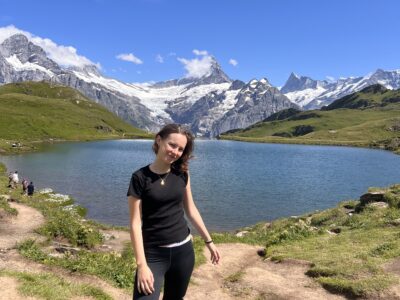
Columbia University’s Institute for Ideas and Imagination is an initiative to transform the intellectual practices of the university by fostering discussion around how knowledge is defined, produced, and taught. It brings together artists and scholars from different backgrounds and with various interests to pursue their own research and engage with one another. The institute welcomes projects in the areas of humanities, the humanistic and social sciences, and conceptual dimensions of the natural applied sciences, visual arts, literature, and many other creative pursuits.
Among the institute’s recently announced 2021 fellows is Lynnette Widder, associate professor in the Master of Science in Sustainability Management program at Columbia’s School of Professional Studies. As a professional in architecture, Widder has learned through years of experience that many of the skills she’s acquired have a wide variety of applications. She has been able to integrate her knowledge from practicing architecture into many different fields that include the nature of materials, craft practices, and even social sciences and history.
For her fellowship at the Institute for Ideas and Imagination, Widder intends to combine her skills in understanding construction documents with archival research methods. As a sustainability practitioner, she also aims to connect this to topics in the areas of sustainably built environments as well as the preservation of materials. The project will focus on exploring practical and intellectual factors that drove the transformation of the West German architectural culture between 1949 and 1959 through the study of theoretical discourse, construction practice, and comparative studies of buildings that embody this transformation. Learn more about the project in the short Q&A below.

How did you come about the idea for this project?
The project draws upon the work I began in the late 1990s while working for an architecture journal in Berlin. One of the editors had trained in art history, was drafted late in the Second World War and sent to the Russian front, which he somehow survived. He returned to Germany to become involved as a journalist, intellectual, advocate, and tastemaker in the rebuilding effort. Conversations with him introduced me to the major themes of West German architecture in the late 1940s through the 50s. Post-war Germany was a flashpoint for transformation in architecture. The country had had a highly developed construction industry, and know-how remained. At the same time, it suffered from an intense dearth of materials, not least of all because of its position in the Cold War — the U.S., during the Korean War of the early 1950s, acquired most of the steel coming out of Germany for the war effort. After starting two World Wars, Germany was very aware of its need for radical social and political transformation. At the same time, the leading architects had been trained in German traditions of philosophy, theology, literature, and art, all of which they hoped could leave an imprint in the new German architecture. Finally, people still believed that architecture was a civic representation of the society around it. All of these stories — the material, the cultural, the spatial, the social, the political — intertwine in the topics I research.
What are your objectives with your research and with this fellowship?
In addition to scholarly publications and conference papers, I have been doing a lot of non-academic writing for the past several years. Part of the challenge of this project will be to write about fairly discipline-specific topics and concerns in a way that is not dry or exclusionary. The Institute for Ideas and Imagination, where I will be for the spring, is interdisciplinary in the best ways. My colleagues there include novelists, filmmakers, activists, and other academics. We meet regularly and present our ongoing work to one another for comment. I am very excited to work in this atmosphere with this group of innovators.
What do you hope to get out of this experience?
Concretely, I hope that I will have a really kick-ass book at the end of the time there. I have a publishing contract with gta Verlag, an excellent, small Swiss academic publisher that makes beautiful books on architectural theory but also publishes really practical studies of building materials — for example, an excellent one on earth building. (I have some expertise here from a funded project I did several years ago on textile-reinforced earth blocks.) But more than a book, I hope that I can define for myself a better way to write about and talk about architecture, and that this will carry over into my teaching. I will also have time in Paris to connect first-hand with urbanists and architects there whose work on resilience and sustainable built environment issues benefits from a willing populace and a supportive national political climate. All of this will be part of what I bring when I return to Columbia to teach again in the summer of 2021.
Ana Contreras is a student in the M.S. in Sustainability Management program at Columbia University.
The M.S. in Sustainability Management, co-sponsored by the Earth Institute and Columbia’s School of Professional Studies, trains students to tackle complex and pressing environmental and managerial challenges. Visit our website to learn more.



